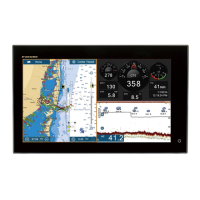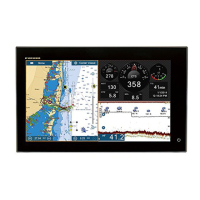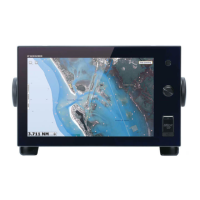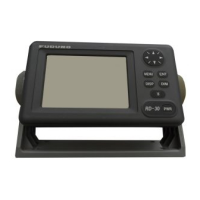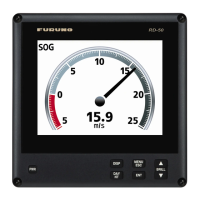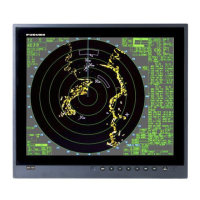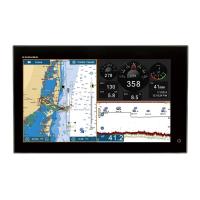7. FISH FINDER (SOUNDER)
7-27
Density of a school of fish
If two schools appear with the same color at different depths, the one in deeper water
is denser because the ultrasonic wave attenuates as it propagates and the school of
fish in deep water tends to be displayed in a weaker color.
Bottom fish
The echoes from the bottom are stronger than the
bottom fish echoes so that you can distinguish be-
tween them by colors. The bottom echoes are
normally shown in reddish-brown or red, the bot-
tom fish echoes in weaker color.
Plankton
Plankton, seen on the screen as a mass of green
or blue dots, appears between the transmission
line and the seabed. Plankton move down in the
day and up at night. Because fish feed of the
plankton, you can observe schools of fish within
the plankton layer.
Current rip
When two ocean currents of different speeds di-
rections and water temperatures meet, a current
rip occurs. A current rip appears on the screen as
shown in the right illustration.
Fish echo
Weak echo
Less reddish
(Sparse echo)
Reddish
(Dense echo)
k
h
Strong echo
Difference in signal strength
Bottom fish echo
Plankton
School of fish
Current rip
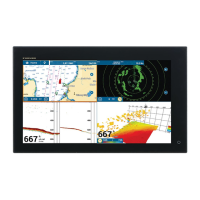
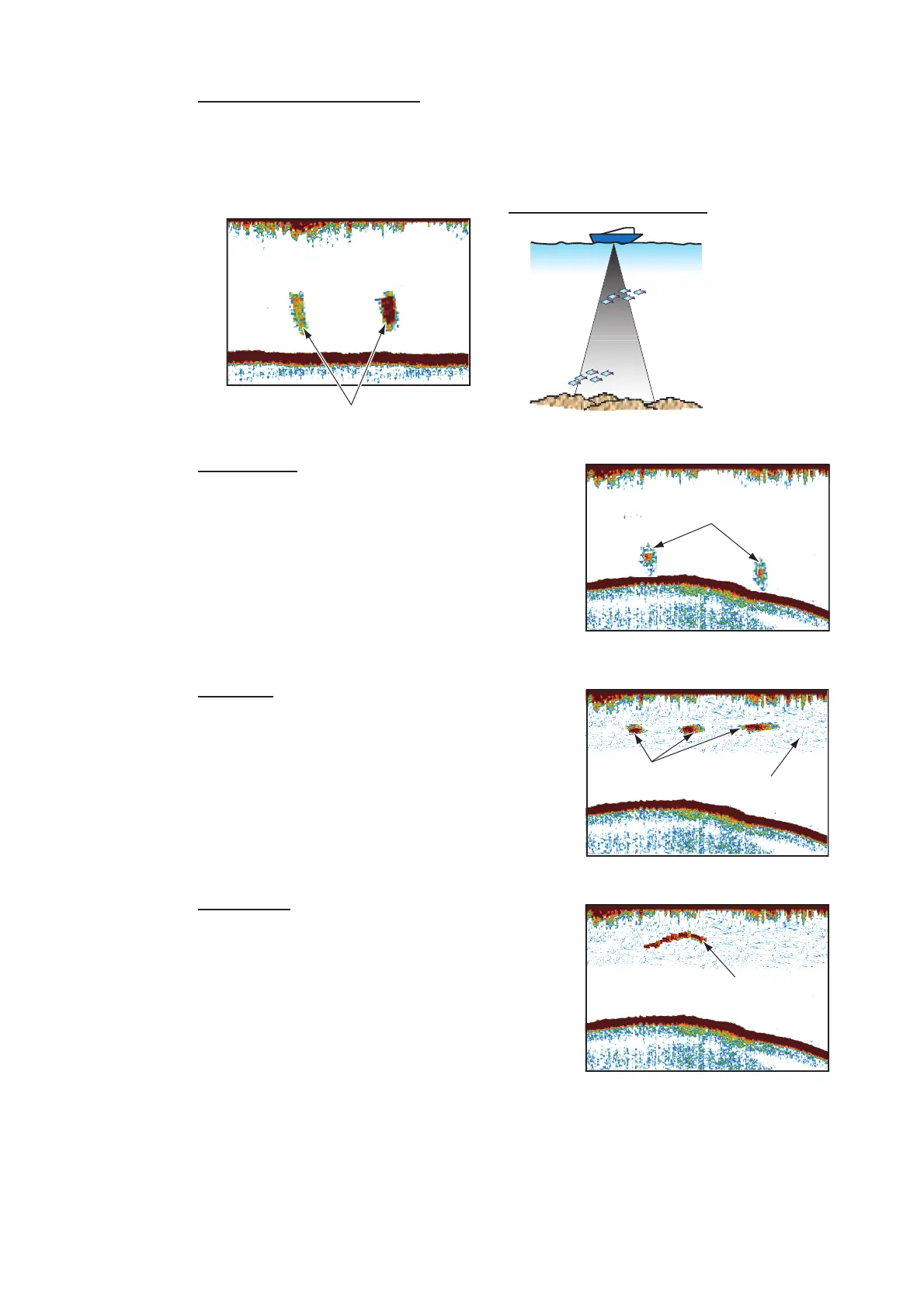